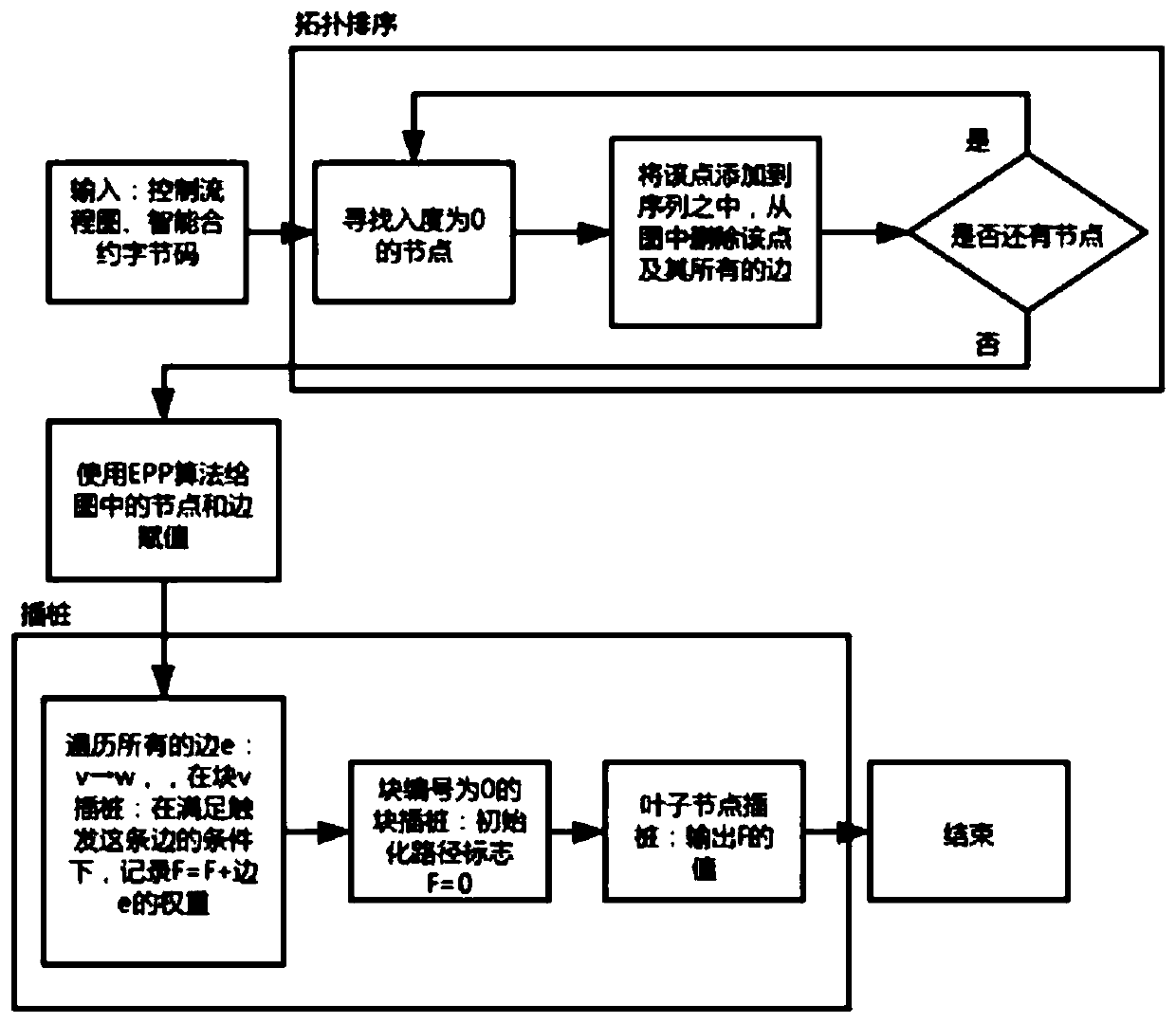Smart contract testing method based on path coverage sufficiency criterion
A path coverage test and smart contract technology, applied in the computer field, can solve the problems of only detecting a limited number of known vulnerabilities and tools cannot detect them, so as to improve the effect of vulnerability detection and reduce labor costs
- Summary
- Abstract
- Description
- Claims
- Application Information
AI Technical Summary
Problems solved by technology
Method used
Image
Examples
Embodiment Construction
[0046] Such as figure 1 As shown, a smart contract testing method based on path coverage sufficiency criterion of the present invention comprises the following steps:
[0047] In the first step, enter the bytecode of the smart contract and the ABI of the smart contract.
[0048] The second step is to generate a control flow chart according to the bytecode.
[0049] The third step is to use the EPP algorithm to analyze the control flow chart, find out the blocks that need to be inserted, and perform the insertion.
[0050] The fourth step is to deploy the smart contract after instrumentation on truffle.
[0051] The fifth step is to generate a set of test cases that meet the requirements according to the path coverage test adequacy criterion.
[0052] The specific description of each of the above steps is as follows:
[0053] The first step is to enter the bytecode of the smart contract, which can be obtained through sol-bin-runtimefilePath.
[0054] The second step is to ...
PUM
 Login to View More
Login to View More Abstract
Description
Claims
Application Information
 Login to View More
Login to View More - R&D
- Intellectual Property
- Life Sciences
- Materials
- Tech Scout
- Unparalleled Data Quality
- Higher Quality Content
- 60% Fewer Hallucinations
Browse by: Latest US Patents, China's latest patents, Technical Efficacy Thesaurus, Application Domain, Technology Topic, Popular Technical Reports.
© 2025 PatSnap. All rights reserved.Legal|Privacy policy|Modern Slavery Act Transparency Statement|Sitemap|About US| Contact US: help@patsnap.com



